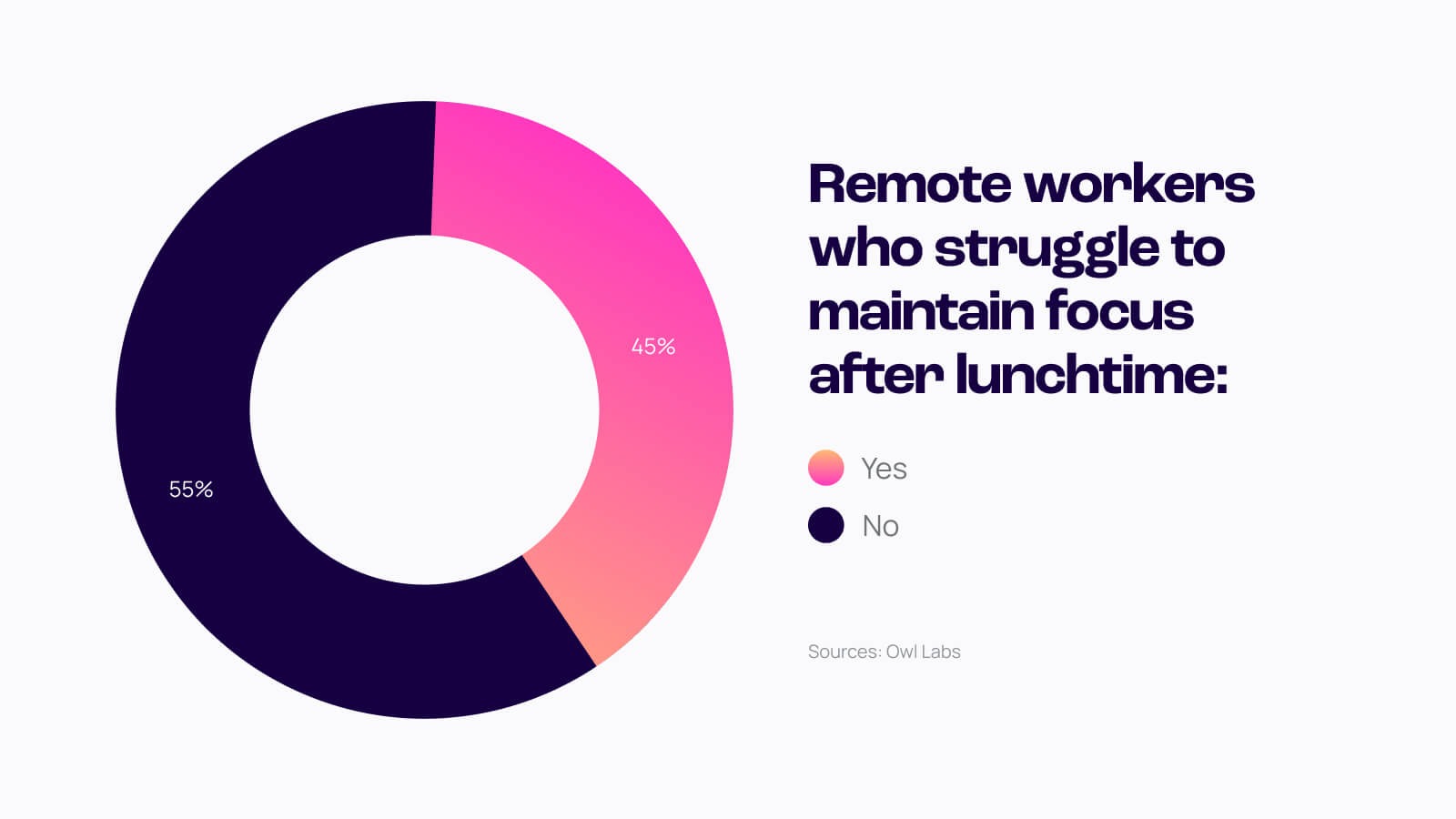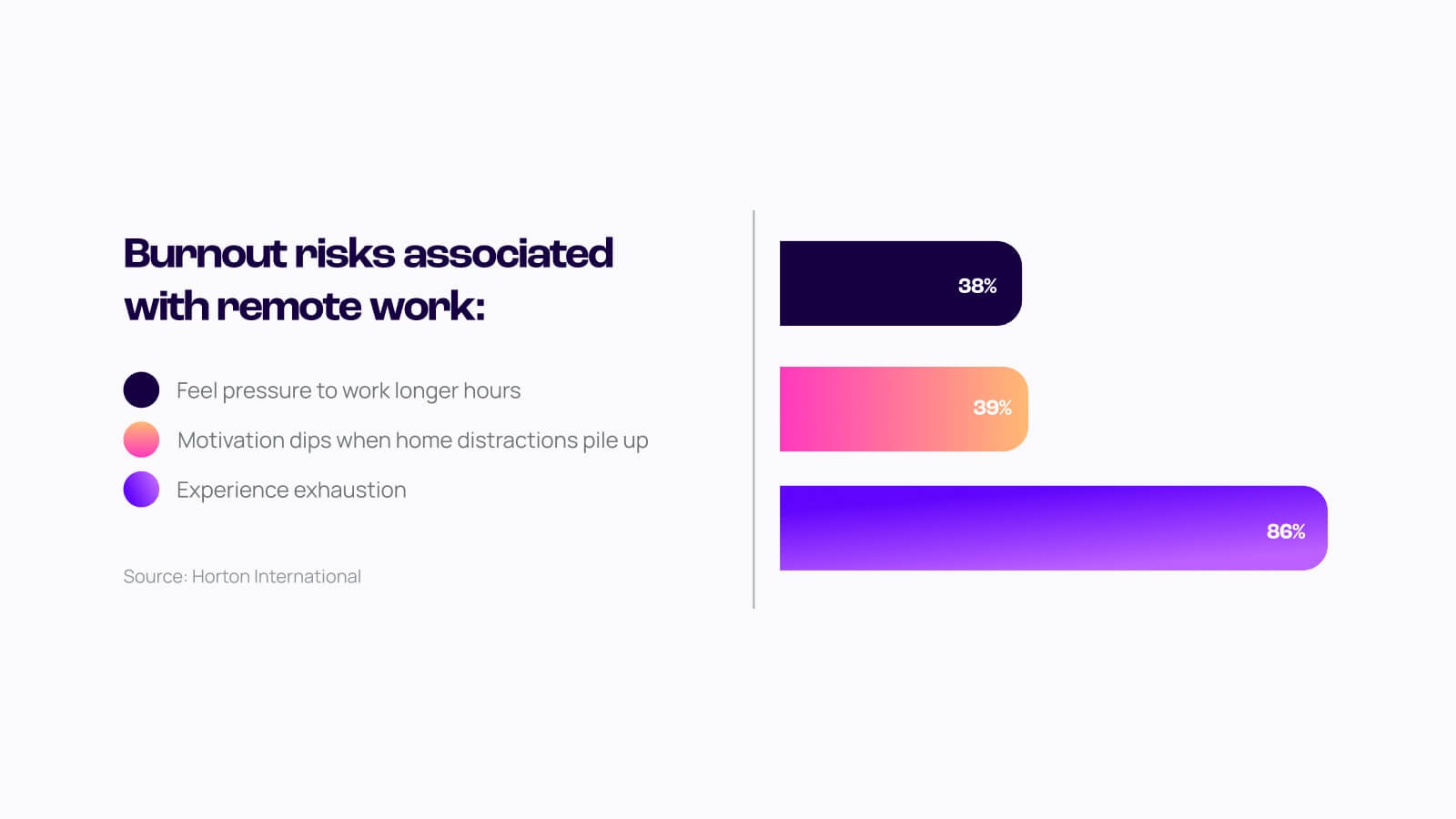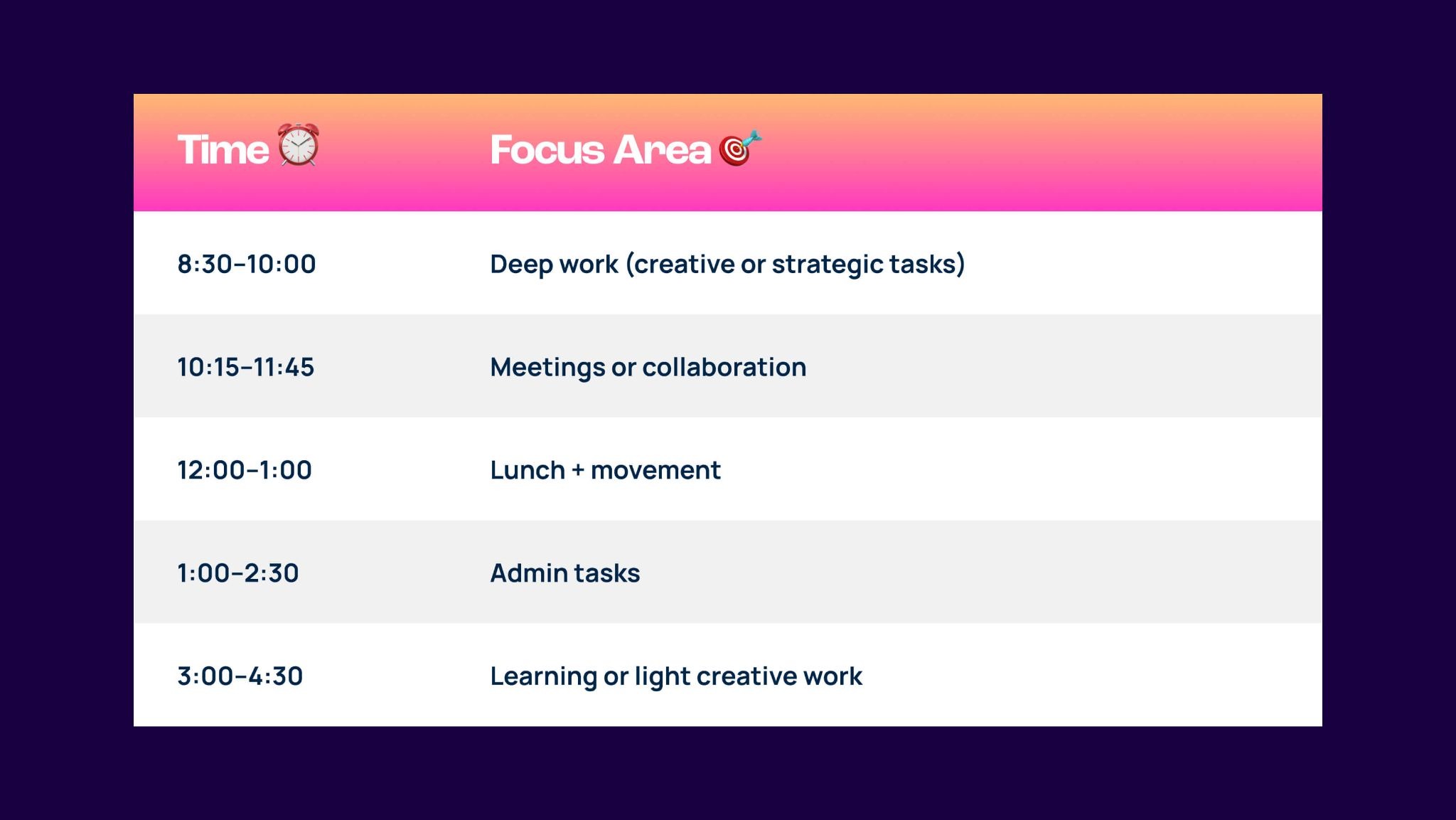
Work From Home Motivation: 10 Proven Habits That Actually Work!
Working from home can be both liberating and challenging.
Without the buzz of an office or clear boundaries between work and life, staying motivated often becomes the hardest part of remote work.
The good news?
Motivation isn’t something you’re born with — it’s something you build. By shaping your daily habits, designing your workspace with intention, and protecting your mental energy, you can create a system that keeps you inspired long-term.
Whether you’re new to remote work or just need a reset, these 10 proven habits and remote work productivity tips will help you stay motivated, avoid burnout and feel genuine job satisfaction while working from home.
Why Motivation Matters in Remote Work
The Link Between Motivation, Focus & Long-Term Performance
Motivation is the fuel behind consistency. It helps remote workers manage their time, meet deadlines, and feel accomplished even without in-person supervision. But once that motivation dips, even simple tasks can feel impossible.
A 2024 Owl Labs survey found that 45% of remote workers struggle to maintain focus after lunchtime, while 39% say motivation dips when home distractions pile up.

In a traditional office, motivation often comes from the energy around you — quick chats with coworkers, the hum of productivity, the sense of “we’re all in this together.” Remote workers don’t have that constant feedback loop. That’s why building self-driven motivation is essential. It’s the difference between surviving and thriving at home.
How Lack of Structure Erodes Drive
Without clear routines, it’s easy for your day to drift. One minute you’re answering emails; the next, you’re folding laundry or doom-scrolling through social media. Over time, this lack of structure chips away at your momentum and self-trust. You might end each day feeling busy but not productive — and that slowly kills motivation.
Work From Home Mental Health Impact
According to the Integrated Benefits Institute, remote and hybrid employees report higher rates of anxiety and depression than in-office workers. Isolation, poor work-life balance, and uncertainty about performance can all affect mental health — which, in turn, drains motivation.
The Burnout Risk
Horton International reports that 38% of remote employees feel pressure to work longer hours, and 86% say they experience exhaustion. When work feels endless, your brain stops associating it with reward — making motivation nearly impossible to sustain. Recognizing this cycle early is key to breaking it.

The Psychology & Biology of Motivation
So, how to focus when working from home? The key is motivation.
Motivation isn’t magic — it’s chemistry and psychology working together — and you can curate it with these remote work motivation ideas:
Intrinsic vs. Extrinsic Motivation
Extrinsic motivation comes from external rewards like praise, pay, or recognition. Intrinsic motivation comes from within — curiosity, purpose, growth. The most successful remote workers cultivate both. They set goals that matter to them personally, not just professionally.
When you genuinely care about your work, you don’t have to chase motivation; it becomes a side effect of purpose.
Dopamine and Micro-Wins
Science shows that small wins trigger dopamine, the neurotransmitter linked to focus and reward. That’s why checking something off your to-do list feels so satisfying. Building momentum through micro-goals keeps dopamine — and motivation — flowing all day.
Decision Fatigue
Remote workers make hundreds of micro-decisions daily: what to prioritize, when to eat, how long to work. Over time, this causes decision fatigue, leading to procrastination and burnout. Reduce mental clutter by automating repetitive choices — plan meals, pre-set your schedule, or use time blocks.
Autonomy, Mastery, and Purpose
The self-determination theory explains that motivation thrives when we feel:
- Autonomy: freedom to choose how we work
- Mastery: the opportunity to improve
- Purpose: connection to something meaningful
Remote work gives you autonomy by default — the rest depends on how you build your systems.
1. Create a Ritual-Based Home Office Routine That Supports Motivation
Your brain loves patterns. When you create rituals that signal “it’s time to work,” focus becomes automatic.
Start/Stop Rituals
Start your day with something consistent — coffee, journaling, or a short walk. These cues help you transition from home mode to work mode. Likewise, end your day with a shutdown ritual: close your laptop, stretch, and mentally sign off. It helps your mind let go of “just one more email.”
Dress for Work (Even at Home)
It’s tempting to stay in pajamas, but changing clothes creates a psychological shift. You don’t need to dress formally — just wear something that helps you feel productive.
Set Work Hours & Buffer Blocks
Define when your workday starts and ends. Add buffer blocks for catch-up tasks or reflection. This structure protects your motivation and your boundaries.
Add Theme Days
Consider grouping similar tasks together:
- Monday: Planning and organization
- Tuesday–Thursday: Deep work and meetings
- Friday: Review and creative time
Theme days add rhythm to your week and make it easier to regain momentum after breaks.
2. Design a Workspace That Energizes You
Your environment shapes how you think and feel. If your workspace drains you, motivation won’t last.
Separate Work and Life Zones
Even if you live in a small space, create a dedicated workspace — a small desk, a certain chair, or even a visual boundary like a rug. Your brain learns to associate that space with focus.
Top Tip: Avoid working from your bedroom at all costs, especially from your actual bed! Your brain associates this with personal space and sleep, which is counterintuitive to work.
Worst case scenario, work from the kitchen table, but where possible, have a completely separate space where you can shut off from everything else in life and start work as you mean to on.

Light, Sound, and Decor
Natural light boosts alertness and mood - a great way to increase productivity. Add plants, use a ring light, or open your blinds/windows to let in sunlight and fresh air. Play ambient sounds or low-fi beats to improve concentration.
The goal: build a space that feels inviting but energizing.
Optimize for Comfort
If your setup causes physical discomfort, your productivity will plummet. Use ergonomic gear — a supportive chair, monitor riser, or external keyboard — to protect your posture and energy.
Declutter Daily
Clutter is a motivation killer. Studies show that a messy space increases cortisol (the stress hormone). Take five minutes at the end of the day to clear your desk. Tomorrow-you will thank you.
3. Set Meaningful Goals & Track Progress
Without visible progress, motivation evaporates. Setting intentional goals keeps you grounded and energized.
Process vs. Outcome Goals
- Outcome goals = What you want to achieve (“Finish the presentation by Friday”)
- Process goals = What you’ll do to get there (“Work 90 minutes on the presentation daily”)
Focusing on the process builds momentum and confidence — two key ingredients for motivation.
Break Projects Into Micro-Goals
If a task feels too big, you’ll avoid it. Break it down into smaller steps. Finishing even one small piece triggers dopamine and reduces resistance to the next step.
Track Progress
Use tools like Notion, ClickUp, or a physical planner to see your wins in real time. When you can see progress, motivation becomes self-reinforcing.
Review Weekly
Fridays are perfect for reflection. Ask:
- What went well?
- What drained me?
- What’s one change I’ll make next week?
Self-awareness is the foundation of motivation.
4. Time Blocking, Breaks & Energy Management
Motivation thrives on momentum — but momentum needs recovery.
Work in Energy Waves
Most people’s focus peaks in 90-minute cycles (called ultradian rhythms). Work deeply for 90 minutes, then rest for 10–20. Respecting these waves helps you maintain motivation all day.
Restorative Breaks
Scrolling your phone doesn’t count as rest. Try a short walk, breathing exercise, or quick stretch. Breaks help reset your dopamine system and restore motivation.
Example Remote Schedule
Despite working from home and have flexibility and autonomy over your work schedule, setting a morning routine and work schedule can be transformative and help you stay on track for the day ahead.
Setting dedicated work time where family members and friends know not to disturb you or expect WhatsApp replies is one of the best productivity hacks for remote workers!

Reset Rituals
When your energy dips, change your state — open a window, change rooms, or play upbeat music. Motion creates emotion, and small resets reignite focus.
5. Overcome Distractions & Procrastination
Working from home means you’re surrounded by distractions — and no boss walking by to keep you accountable. For many, this makes staying productive remotely even more challenging.
Identify Your Top Distractions
Is it your phone? Household chores? Social media? Write them down, then set boundaries. Move your phone out of reach, or use website blockers like Freedom or Cold Turkey.
Build “Focus Hygiene”
Silence notifications, close unused tabs, and use full-screen mode. Create rituals that make distraction-free work feel sacred.
Use Accountability Tools
Try FocusMate (virtual coworking) or a simple timer to stay on task. Public accountability — even digital — increases follow-through.
Track Distractions, Don’t Shame Them
Instead of feeling guilty, note when and why you lost focus. Over time, you’ll spot patterns and design better solutions.
6. Prioritize Wellbeing to Sustain Motivation
You can’t outwork burnout. To stay motivated, your body and mind must work together.
Physical Health Fuels Mental Energy
Exercise releases dopamine and serotonin — natural motivation boosters. Even a 20-minute walk can shift your mindset. Drink water, stretch often, and fuel your body with whole foods.
Watch for Early Burnout Signs
If you’re constantly tired, irritable, or zoning out, you’re likely overworking. Burnout doesn’t just destroy productivity — it can make you resent your work altogether.
Practice Digital Detox
A 2024 study found that workers who took at least two screen-free breaks daily reported 24% higher focus and satisfaction. Step away completely — no phone, no laptop, no TV. Let your brain recharge.
Reduce Zoom Fatigue
Video calls are draining because you’re constantly monitoring your own image. Turn off self-view, schedule “no meeting” days, and take calls by phone when possible. Guarding your mental space keeps motivation intact.
7. Mindset Shifts That Strengthen Motivation
Habits create structure — but your mindset creates sustainability. Even with perfect routines, motivation fades when your inner narrative isn’t supportive. The most productive remote workers don’t just manage their time; they manage their thoughts about time, work, and progress.
Reframe Productivity as Progress, Not Perfection
Remote work often blurs boundaries and expectations. You might feel guilty for not doing enough — even when you’ve done plenty. That guilt is motivation’s worst enemy. Instead of chasing perfection, focus on progress over performance.
Ask yourself: “What small step moved me forward today?” A five-minute email or an outline draft still counts. When you reframe productivity this way, you stop measuring yourself against unrealistic daily output and start celebrating genuine growth.
Shift From Motivation to Momentum
Motivation feels great, but it’s unreliable. Momentum, on the other hand, is built through tiny consistent actions. You don’t need to feel like it to start — you just need to start. Once you take the first step, the emotional energy catches up. This is called behavioral activation — action before motivation.
Think of it as lighting a match: friction comes first, then the spark.
Embrace “Good Enough” Energy
Some days, your best is 100%. Other days, it’s 60%. That’s okay. Motivation grows when you give yourself grace instead of judgment. The key is showing up consistently, not flawlessly. By accepting imperfection, you make it easier to stay in motion — and motion sustains motivation.
Focus on Identity, Not Outcomes
When your goals tie to your identity (“I’m a person who follows through”), motivation becomes automatic. You’re no longer chasing results; you’re maintaining integrity with who you believe yourself to be.
The more you see yourself as disciplined, the more naturally you act that way — even on tough days.
8. Build Connection, Feedback & Accountability
Motivation thrives in community — even remote ones.
The Loneliness Problem
20% of remote workers say loneliness is their biggest challenge. Without connection, work can feel transactional instead of purposeful.
Create Connection Intentionally
- Schedule coffee chats with coworkers or friends
- Join an online coworking group
- Use Slack or Discord channels to interact casually
Social accountability helps you stay engaged and consistent.
Ask for Feedback
Feedback is fuel. It validates effort, provides direction, and reminds you that your work matters. Don’t wait for performance reviews — ask for it regularly.
Celebrate Wins Publicly
Whether in a group chat or community space, share your progress. Seeing others cheer you on strengthens motivation and builds momentum.
Manager Tip: Learn how to keep remote teams motivated in [10 Essential Strategies for Managing Remote Teams] — a Paybump resource for leaders and team builders.
9. Reboot & Adapt When Motivation Slumps
Even the most disciplined workers hit motivation plateaus. What separates successful remote professionals is how they respond.
Recognize the Natural Flow
Energy naturally rises and falls. When motivation dips, don’t panic — adjust. Sometimes, the best move is a quick break, not more effort.
Quick Motivation Reboots
- Do a 5-minute cleanup
- Take a walk outside
- Change your playlist or scenery
- Tackle one small, easy win
Momentum loves motion. One micro-action can reignite your drive.
Quarterly Self-Audits
Every few months, reassess your systems. Which habits still work? Which don’t? Small changes can make a massive difference in your motivation.
Experiment With Novelty
Try a new workspace, rearrange your setup, or test a new productivity tool. Novelty stimulates the brain’s reward center, refreshing your focus.
Seek Support When Needed
If your lack of motivation persists for weeks, talk to a professional. Chronic fatigue, disinterest, or overwhelm might indicate burnout or depression — both treatable with the right help.
10. Long-Term Mindset: Motivation as Maintenance
The secret to sustainable motivation isn’t intensity — it’s maintenance.
Consistency Over Hustle
You don’t need to feel inspired every day. Motivation is built through showing up consistently, not perfectly. Progress compounds over time.
Build Your Motivation Toolbox
Keep a list of tools that reignite your focus — a favorite playlist, stretching routine, inspiring quote, or supportive friend. When motivation dips, you’ll know exactly what to reach for.
Reinforce Your Identity
Every time you follow through, you strengthen your identity as a motivated person. Instead of saying, “I need motivation,” say, “I’m someone who follows through.” That mindset shift is powerful.
Avoid Productivity Guilt
You don’t need to optimize every moment. Sometimes “good enough” keeps you going longer than perfectionism ever could.
Refresh Your Systems Seasonally
As your life evolves, so should your routines. Review your workspace, habits, and tools every few months to keep things aligned with your current goals.
Motivation Is a Skill You Build
Motivation isn’t about hype — it’s about habit.
The most successful remote workers don’t rely on inspiration; they rely on systems. By building a strong foundation of routines, environments, and mindset tools, you’ll make motivation something you can access on demand, not chase.
Once you learn to manage your energy, protect your focus, and design your environment for success, remote work stops being a challenge and starts feeling like freedom.
Ready to level up your remote routine?
Become a Paybump member for expert-led guides, resume resources, and weekly job updates that help you thrive while working from home. Explore the Paybump Career Hub or sign up for our newsletter to get practical remote work tips and curated job leads straight to your inbox.
FAQs
How can I stay motivated when working from home?
Create structure with start and end times, dress for work, and break tasks into achievable goals that give you momentum.
What causes loss of motivation during remote work?
Distractions, lack of feedback, and blurred work-life boundaries. Without social energy, your brain stops getting the cues it needs to stay alert.
How can I prevent burnout while working remotely?
Take regular breaks, move your body, and set boundaries around communication. Rest is a productivity strategy, not a reward.
What are the best productivity tools for working from home?
Notion, Asana, and Todoist for task management; RescueTime and FocusMate for accountability and focus tracking.
Can my manager help me stay motivated remotely?
Yes — through clear expectations, consistent feedback, and recognition. Managers can learn more in Paybump’s 10 Essential Strategies for Managing Remote Teams.
How do I reset motivation after a slump?
Start small: tidy your space, complete one micro-task, or step outside. Action sparks motivation.
Does working from home affect mental health?
Yes, but you can offset the risks through social connection, strong routines, and mindfulness. Prioritizing self-care protects your motivation and wellbeing.






